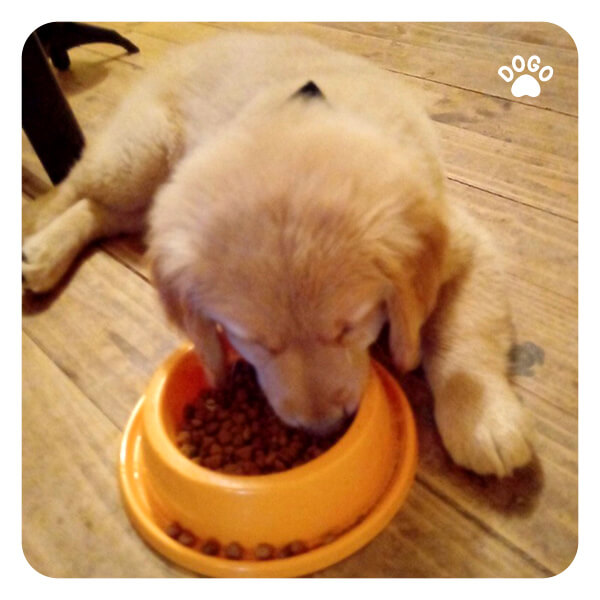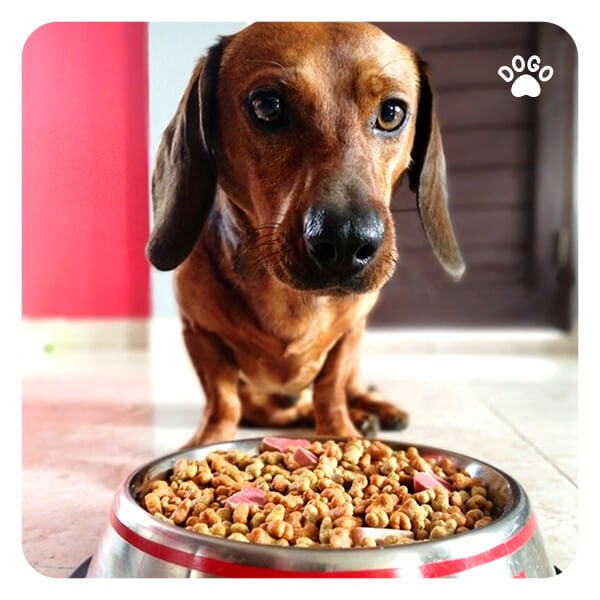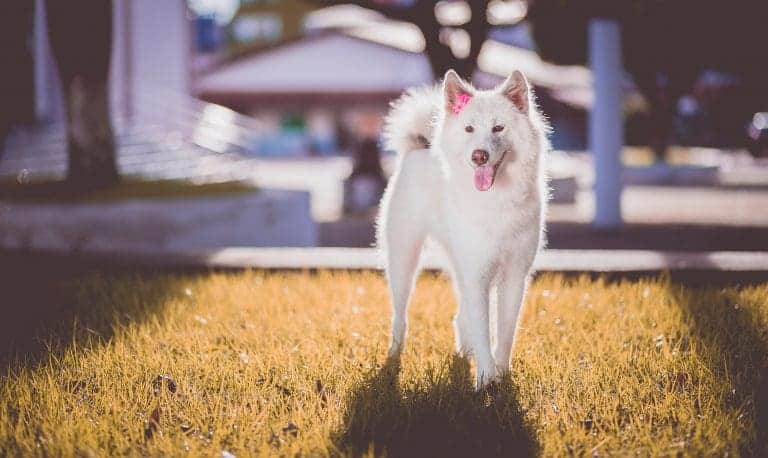How Many Calories Should My Dog Get per Day?
Post Date:
July 18, 2024
(Date Last Modified: November 13, 2025)
Calorie intake defines how much energy a dog has available for movement, growth, and bodily maintenance. Matching calories to a dog’s life stage and activity helps support healthy weight and function.
Why calories matter for dog health
Clinicians commonly use a nine-point body condition score (BCS) to assess fat coverage and muscle mass in dogs, with higher numbers indicating greater fat stores[1].
An elevated BCS of seven or greater on the nine-point scale typically indicates overweight or obesity and guides calorie-reduction plans[2].
Calories are the unit of energy in food; persistent positive or negative calorie balance leads to gradual weight gain or loss, which is tracked clinically with BCS and by serial weight measurements[1].
How canine calorie needs are estimated (RER and MER)
The Resting Energy Requirement (RER) is commonly calculated with the equation RER = 70 × (body weight in kilograms)^0.75, reported in kilocalories per day (kcal/day)[3].
| Life stage / activity | MER multiplier | Example for a 30 lb (13.6 kg) dog | Notes |
|---|---|---|---|
| Neutered adult | 1.6 | ~900 kcal/day | Typical pet, low activity |
| Intact adult | 1.8 | ~1,000 kcal/day | Higher maintenance than neutered |
| Active / working | 2.0–5.0 | ~1,100–2,800 kcal/day | Depends on workload and endurance |
| Puppy (up to 4 months) | 2.5–3.0 | ~1,400–1,700 kcal/day | Rapid growth phase |
MER is estimated by multiplying RER by a life-stage or activity multiplier; those multipliers are clinical conventions used to produce a starting kcal/day target for daily feeding plans[3].
Key factors that change a dog’s caloric needs
Body composition matters: two dogs of the same weight can have different needs because lean mass uses more energy than fat, and resting metabolic rate rises with increased lean tissue by clinically meaningful percentages compared with obese dogs[4].
Life stage and reproductive status alter needs substantially; for example, intact adults and active working dogs often require higher MER multipliers than neutered pets, and puppies require multiple times the RER for growth[3].
Medical conditions and some medications change energy requirements: hypothyroidism can lower metabolic rate while hyperthyroidism or corticosteroid therapy can increase appetite and caloric demand, so energy targets often need veterinary adjustment[4].
Step-by-step calorie calculation you can do at home
Weigh the dog on a flat scale and convert pounds to kilograms by dividing pounds by 2.2046; for example, a 30 lb dog equals about 13.6 kg[1].
Calculate RER using RER = 70 × (kg)^0.75, which yields kcal/day; apply the chosen MER multiplier (for example 1.6 for many neutered adults) to get a practical daily kcal target[3].
Round to convenient feeding amounts and translate kcal/day into cups or cans using the food’s kcal per cup or per can on the label or manufacturer’s database, and verify with a kitchen scale for accuracy[5].
Reassess and adjust after two to four weeks based on weight change and BCS, reducing or increasing calories by small increments until steady progress is achieved[2].
Life stages and medical situations requiring adjusted calories
Puppies in the rapid growth phase may require about two to three times RER, with exact measures tailored by age and breed size to avoid excessive weight gain during growth[3].
Lactating females can need markedly more energy; peak lactation may push requirements to three to five times RER depending on litter size and milk output[3].
Seniors often benefit from modest calorie adjustments combined with higher-protein or joint-supporting diets, and dogs recovering from illness may need individualized increases or decreases in kcal guided by a veterinarian[4].
Choosing and measuring food by calories
Read pet food labels for kcal per cup or per can and, when labels use kcal per kilogram, convert to serving sizes using a kitchen scale for accuracy rather than relying on cup estimates alone[5].
Dry foods commonly range from about 300 to 500 kcal per cup, while wet foods often supply 70 to 150 kcal per typical 5.5 oz (156 g) can, so comparing energy density helps match portion sizes to the kcal/day target[5].
- Measure with a gram kitchen scale when possible to limit variance in portions and account for differences in kibble density[5].
Account for treats and toppers by estimating their kcal contribution and including them within the daily kcal budget to prevent inadvertent calorie excess or shortfall[2].
Designing safe weight-loss or weight-gain plans
Target gradual changes: a common safe weight-loss goal is around 1% of starting body weight per week for overweight dogs, achieved by a modest daily calorie reduction and monitored progress[2].
Preserve lean mass during weight loss by feeding adequate high-quality protein and considering multiple smaller meals per day; sudden large calorie cuts increase muscle loss risk and are generally discouraged[4].
For weight gain, start with a small daily surplus and combine higher-calorie, nutrient-dense food with activities that encourage appetite; reassess weekly until the desired rate of gain is consistent[1].
Monitoring, adjusting, and tracking success
Use a consistent scale and measure at least every two weeks for most weight-management plans, and use BCS along with weight to assess whether caloric targets are appropriate[2].
Adjust calories when weight change plateaus or exceeds targets; a typical course correction is altering daily kcal by 10% to 20% then monitoring again over two to four weeks[3].
Keep simple records—date, weight, BCS, kcal/day fed, and major diet changes—and use photos and measurements to document visual and dimensional changes that may not show immediately on the scale[2].
Working with veterinarians and digital tools
Consult a veterinarian or veterinary nutritionist when dealing with severe obesity, rapid unexplained weight change, or medical conditions that affect metabolism, as those cases often need diagnostic testing and tailored plans[4].
Validated online calculators and smartphone apps can provide starting RER and MER estimates and support record-keeping, but clinical judgment and periodic scale-based verification remain essential[3].
Bring recent weights, BCS notes, the current diet (brand, formula, kcal per cup or can), treat amounts, and any medication history to appointments for accurate individualized recommendations from your veterinarian[5].
Further practical examples and a worked calculation
Weigh the dog accurately on a flat digital scale; record pounds and convert to kilograms by dividing by 2.2046, then compute RER with RER = 70 × (kg)^0.75 to get kcal/day[3].
Example: a 50 lb (22.7 kg) dog has an RER of about 728 kcal/day when calculated with the formula above, and a typical neutered-adult MER multiplier of 1.6 yields roughly 1,165 kcal/day as the starting maintenance target[3].
If the same dog is moderately active and a working multiplier of 2.5 is chosen, the MER estimate would be approximately 1,820 kcal/day, which illustrates how activity class drives practical feeding goals and why multipliers must be chosen to match real-world behavior rather than assumptions[3].
Translating kcal targets into portions and tracking accuracy
When a food label states 350 kcal per cup, feeding 1,165 kcal/day requires about 3.3 cups of that kibble, so rounding to measured portions and confirming with a kitchen scale reduces day-to-day variation that often exceeds 10% when cups are eyeballed[5].
For wet food labeled at 150 kcal per 5.5 oz (156 g) can, meeting a 1,165 kcal/day target would require nearly eight such cans, which is why many owners use a mix of wet and dry food or energy-dense toppers to reach calorie goals practically and economically[5].
Include treats as part of the daily tally; if treats total 100 kcal per day, subtract that amount from the main-meal kcal allowance to maintain the planned net daily intake[2].
Troubleshooting: common scenarios where calculations need revision
If weight is not changing as expected after two to four weeks of feeding the planned kcal/day, reassess food measurement technique and activity estimates rather than immediately altering the MER, since common measurement error frequently explains the discrepancy[2].
Rapid weight loss exceeding 10% of body weight over 2 to 4 weeks, or sudden weight gain of similar magnitude, warrants prompt veterinary evaluation because those rates often indicate underlying disease or measurement error and need diagnostic follow-up[1].
Plateaus during a planned weight-loss program are common; a typical adjustment is to reduce calories by 10% to 20% from the current intake and recheck weight in two to four weeks rather than making large step changes that can harm lean mass and metabolism[3].
Nutrition in clinical care and when to use therapeutic diets
Dogs with endocrine diseases such as uncontrolled diabetes, Cushing’s disease, or severe hypothyroidism often require individualized energy and macronutrient adjustments and sometimes prescription therapeutic diets under veterinary supervision[4].
During recovery from major surgery or illness, daily energy needs may be higher than maintenance to support tissue repair; a clinician will often prescribe a kcal/day goal above RER based on wound status, infection risk, and measured weight trends[1].
When a dog is anorexic or unable to meet calories voluntarily, veterinarians may recommend assisted feeding strategies, including calorie-dense syrups, appetite stimulants, or temporary feeding tubes, all of which require clinical oversight and follow-up weight monitoring[4].
Behavioral and environmental considerations that affect calorie balance
Feeding frequency and presentation influence consumption; spreading the daily kcal across two to four meals can reduce begging and better preserve lean mass during weight loss by evening out postprandial amino acid availability[4].
Activity increases such as introducing daily 20 to 40 minutes of brisk walking or play are useful adjuncts to modest calorie reduction plans because increasing energy expenditure helps create a sustainable calorie deficit without overly restricting food[2].
Practical record-keeping and using tools effectively
Keep a simple log with date, weight, BCS, feeding kcal/day, and treat kcal; reviewing this weekly helps spot trends and often reveals small, cumulative feeding errors that explain slow weight drift more clearly than single measurements[2].
Validated online calculators and mobile apps that implement the RER/MER approach can speed initial estimates and produce printable targets to share with a veterinarian, but owners should still verify kcal-per-cup numbers from the food manufacturer and confirm portions on a scale[3].
Smart pet scales and connected feeders that log intake can reduce human-measurement error and provide time-stamped histories showing how variation in feeding relates to weight trends, which clinicians can use to fine-tune kcal prescriptions[5].
Communication checklist for veterinary appointments
Bring a recent weight record (ideally two or more values over the previous month), notes






